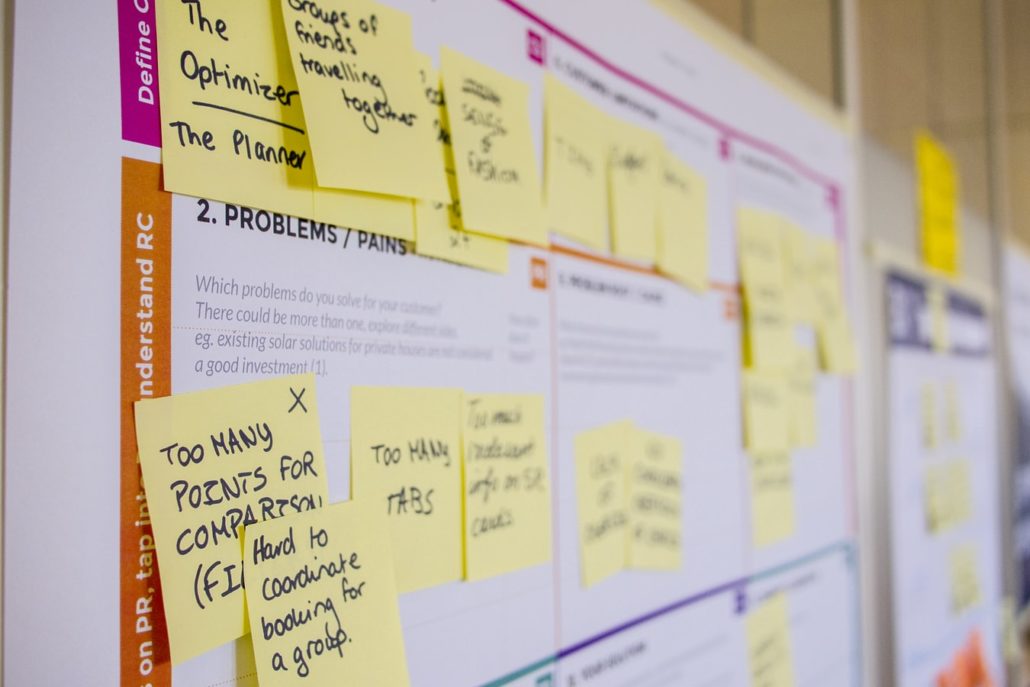7 Foolproof Practices to Help You Maximize Your UX Research
UX, also known as user experience research, finds insights to create the best experience for your users. It is systematically studying your customers to find out what they want and what they need so you can design a seamless and pleasurable experience for them based on your findings.
UX, also known as user experience research, finds insights to create the best experience for your users. It is systematically studying your customers to find out what they want and what they need so you can design a seamless and pleasurable experience for them based on your findings.
However, it’s not enough to conduct UX research; what is more important is your ability to conduct your UX research effectively to acquire the right results.
If you are a UX designer, ecommerce trader, or digital marketer wondering how to conduct your UX research process to get the result you need, you are in the right place.
This article will discuss seven best practices you must employ to get the most out of your UX research.
The importance of UX research

In recent research, 81% of executives stated that conducting UX research increases their company’s efficiency. In contrast, 86% reported that conducting UX research enables them to improve on the product and services they offer.
More than this, conducting UX research helps your company save a lot of money.
Imagine you’ve invested tons of dollars in producing a product or service, then, you realize your users don’t have any interest or need for it. It will be a regrettable experience knowing you can invest the wasted money into some other thing that could move your business forward.
Conducting UX research saves you from wasting money because it gives you a clear understanding of your customers’ current stage and gives you a clear perception of what they really want, so you create exactly what they need.
This will put you on the right track and help your company reach its sales goals through customer satisfaction.
Qualitative and quantitative research
To conduct effective UX research, you need to employ quantitative and qualitative research methods.
Quantitative research helps you gather your data in a measurable and numerical form, while qualitative research collects data through your user’s opinions and motivations.
While quantitative research is all about numeric and factual data, qualitative research goes more in-depth to analyze how your users feel about your product or service.
Google Analytics, Kissmetrics, or Woopra are effective tools to help you conduct your quantitative research.
These tools provide you with insights on the number of visitors that visit your site or the number of visitors you can convert to leads and from leads to customers.
To conduct Qualitative research, it’s recommended you use open-ended customer surveys.
With customer surveys, you can have an in-depth understanding of what your customers want, what they need, and have a deep insight into their pain points so that you can profer solutions for them.
You will know what features of your product or service they find pleasurable and interesting and what part of your product they find rigorous and boring, so you can make the needed improvement and create the best experience for your users.
Top 7 Best practices to maximize your UX research
For UX research, practice makes perfect or at least provides you with accurate results. Below are the top methods to keep in mind when conducting your UX Research to achieve the best results.
1. Understand your user

To build a system, product, or service your users love, you need to first know who your customers are.
You must know their interests, personalities, what makes them tick, what repels them, and what challenges they encounter in their day-to-day activities which is where conducting qualitative research comes in.
With qualitative research, you will be able to understand your customers in-depth and create a customer-centric design.
Also, building a customer persona will get you to truly know your users and their typical lifestyle to create a product that will fit into addressing their needs.
2. Choose the right research method

You must select the research method for your UX research based on the type of project and the goals you have in mind to get the best from it.
To do this, you should consider the most suitable method for your research using the 3-dimensional framework that consists of Attitudinal vs. Behavioral, Qualitative vs. Quantitative, and Context of Use.
Attitudinal vs. Behavioral research essentially differentiates between what people say and do.
Attitudinal research is based on your users’ beliefs which explores how they think they will act in certain situations.
On the other hand, behavioral research deviates from what your users think they will do to what they actually do in those situations.
As discussed earlier, qualitative research reveals why your users behave in a particular way while quantitative research gives you raw, numeric data about your users to work with.
Context in Use explores if your customers will actually be using your products or not and how they use it if they would.
You must understand these various research methods and choose the method that best aligns with your product and the results you have in mind.
3. Include context-based basic research in your UX research

Basic research is all about figuring out specific concepts without having an application in view.
This is a type of research used by most scientists to determine why a certain phenomenon exists so people can use the information they’ve got from this research in the future.
Concerning conducting UX Research, starting with conducting basic research on how your users think and what they need and prefer without a plan in mind can effectively build empathy for your users.
This is because, with this strategy, you aren’t concerned about building an app or a product. Rather, you are genuinely interested in your users, which helps you to conduct a more effective UX research that can be geared towards addressing your users’ real needs in future.
4. Look out for the unexpected
Usually, when trying to find answers, we confine ourselves to the norm, to the things we are already used to or expect to happen.
However, drifting from the norm when conducting your UX research is fundamental to experiencing tremendous results with your research. To do this, you have to be more open-minded and think outside the box when conducting your research.
For example, if your Google Analytics reports that 70% of your visitors visit your home page and move to purchase your product from there, you shouldn’t stop at analyzing the behavioral patterns of this 70%; you should sail differently to figure out what the other 30% do.
Try to analyze the activities of this 30% of your users. Why didn’t they purchase your product? What were their challenges, and how can you create a better experience for them?
By doing this, you will not only be solving the problems of the majority of your users, but you will be able to consider the needs and wants of all your users to create a desirable experience for everyone.
5. Test repeatedly when necessary
As a UX designer and Researcher, feedback is highly fundamental when testing your product. However, sometimes, the feedback you get on your product may not be what you expect.
Your users might hate and have negative reviews on a product you’ve created.
While the impulsive thing to do might be to give up on your product and end the research, you shouldn’t end it all just because you realize your users have complaints about your product or do not like your product at all.
Rather than give up, you should endeavor to find out why your users hate what you’ve created, review their complaints, develop new ways to make your product work for your users, and then keep testing.
The more you test, the more you can know more about your users’ needs and how you can fit your product to suit their needs. A/B testing tools like Maze help you carry out impeccable user testing.
6. Be willing to put in the work; time, and effort

An effective UX research doesn’t just happen; it takes deliberate effort and requires money to build, test, and run it effectively.
As a UX researcher or designer, you must keep this in mind because you can only perform your research based on the resources available and the time and effort you are willing to invest in it.
Only when you invest adequate resources, time, and effort can you be sure to conduct your research effectively.
7. Never stop researching

UX research isn’t crucial only at the start of your project; it is a necessity that never ends.
With evolving technology and an ever-changing market, you should consistently conduct UX research to stay updated about your customers’ needs and wants.
UX research should be a long-term activity and not just a one-off thing so that you can give your users the best experience at all times.
Conclusion
UX research is a part of business that may not be the easiest but has excellent rewards for a job well done. With adequate UX research, you can grossly improve the delivery of your website and improve consumer satisfaction. Working with the highlighted practices remains the best way to enjoy the rewards of UX research maximally.
















